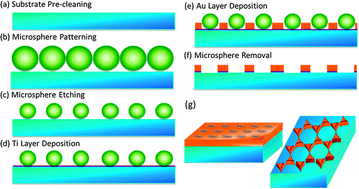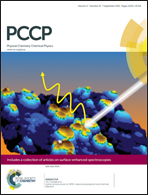Tailoring plasmonic properties of gold nanohole arrays for surface-enhanced Raman scattering†
Abstract
The wide plasmonic tuning range of nanotriangle and nanohole array patterns fabricated by nanosphere lithography makes them promising in surface-enhanced Raman scattering (SERS) sensors. Unfortunately, it is challenging to optimize these patterns for SERS sensing because their optical response is a complex mixture of localized surface plasmon resonance (SPR) and propagating surface plasmon polariton (SPP). In this paper, transmission and reflection measurements are combined with finite difference time domain simulations to identify and separate each plasmonic mode, discerning which resonance leads to the electromagnetic field enhancement. The SERS enhancement is found to be dominated by the absorption, which is shifted from the transmission and reflection dips usually used as tuning points, and by the ‘gap’ defects formed within the pattern. These effects have different spectral and geometric dependences, forming two optimization curves which can be used to predict the best performance for a given excitation wavelength. The developed model is verified with experimental SERS measurements for several nanohole sizes and periodicities, and then used to give optimal fabrication parameters for a range of measurement conditions. The results will promote the application of two-dimensional plasmonic nanoarrays in SERS sensors.

- This article is part of the themed collection: Surface-enhanced spectroscopies

 Please wait while we load your content...
Please wait while we load your content...